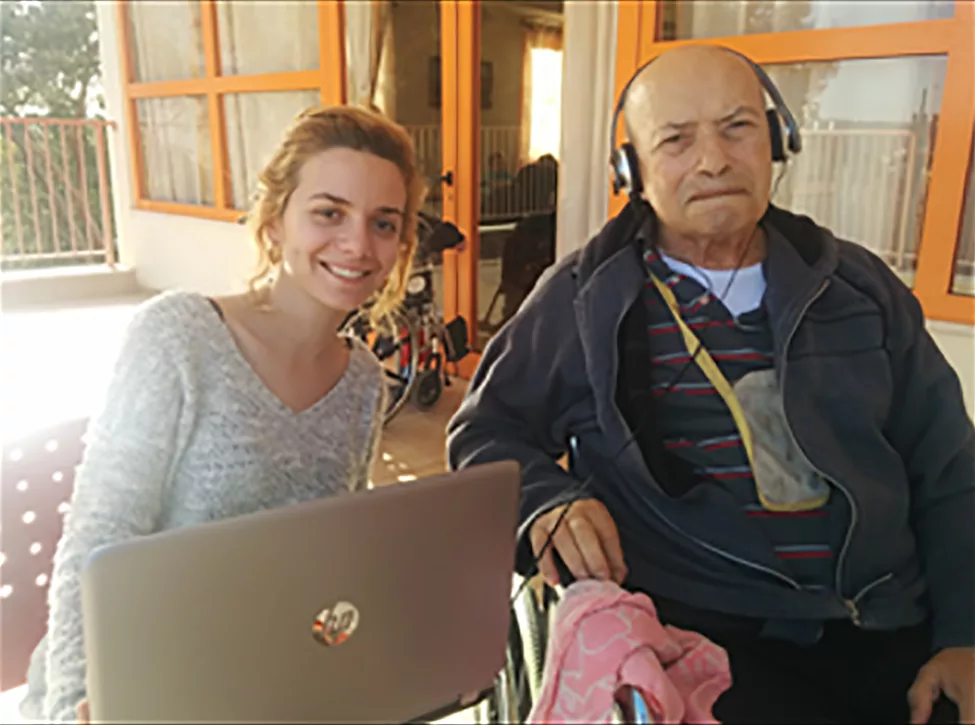Sounds of Youth

Sitting in her apartment in Beer Sheva, Israel, 90-year-old Malka Liberman feels a tinge of nostalgia for her Transylvanian childhood.
It’s been 69 years since Liberman left Transylvania; she can barely remember the sounds of her youth. Luckily last year, Ben Gurion University students Esti Iosifov and Leon Aronski found a way to help immigrants like Liberman. These two students co-founded the project Sounds of Youth in December 2015, which provides music to elderly Eastern European-Israeli immigrants. This project encourages interaction between Russian-speaking students at the university with Eastern-European elder immigrants by pairing together students and elders—some of whom are Holocaust survivors, like Liberman.
Co-founders Iosifov and Aronski were inspired to create Sounds of Youth from the Sundance Film Festival Audience Award-winning documentary “Alive Inside.” The movie shows how music can help people suffering with memory loss in Alzheimer’s disease and dementia.
“Making our dream a reality now required work on two different aspects: We needed volunteers and we needed the MP3 players,” said Iosifov. She and Aronski held a fundraising party to raise the money necessary for the MP3 players. They raised 2,000 Israeli New Shekels (around $528 USD). The Sounds of Youth initiative is part of Hillel BGU’s Masa Beikvot program, which is supported by Genesis Philanthropy Group.
At the first Sounds of Youth meeting in March in Beer Sheva, 25 students and 20 elders listened to the songs together on a computer to create the playlist. At the next meeting, students gifted the MP3 players to the elders with the elder’s personal playlists, and taught the elders how to operate the device.
“At first I was skeptical and wasn’t sure you can find the old songs, but it’s amazing that [Hillel Ben Gurion] managed to,” said Sonia Parnas, an 81-year-old Ukrainian Holocaust survivor who lives in a nursing home in Beer Sheva. “I was excited to listen, and surprised that the words of the songs that I hadn’t listened to in years somehow came back to me. I even sang a few of them.” Parnas especially enjoyed listening to French singer Edith Piaf and the Yiddish artist Papirosen.
“I asked to participate because I love to spend time with students and tell them stories,” Liberman said. Russian songs like Alexander Gradsky’s, Astor Piazzolla’s andPapirosen’s (also Yiddish) filled Liberman’s ears.
Another elder, 78-year-old Larisa Litbak, recalled two Yiddish songs from her Ukrainian childhood to the group: Esther Ofarim’s “Oyfn Pripetchik” and Uzi Hitman’s “Toda.” She recalled her father listening to these songs after work. Most of Larisa’s family died in the Holocaust. She made aliyah to Israel in the early 1990s and now lives in Beer Sheva.
A few of the song requests for the playlists surprised the leaders; some elders asked for meditation music and early Madonna albums. Most of the playlists included Yiddish music.
Hillel student Iosifov said she was “hit with a massive wave of appreciation” when handing out the MP3 players. “Helping elderly people isn’t always about solving major problems. We often treat them like broken clocks and try to fix them with medicine.”
Iosifov continued, “We forget to communicate with them like people with interests and passion. Sharing special moments, creating new experiences and helping to remember old ones through music is a great way to change that.”